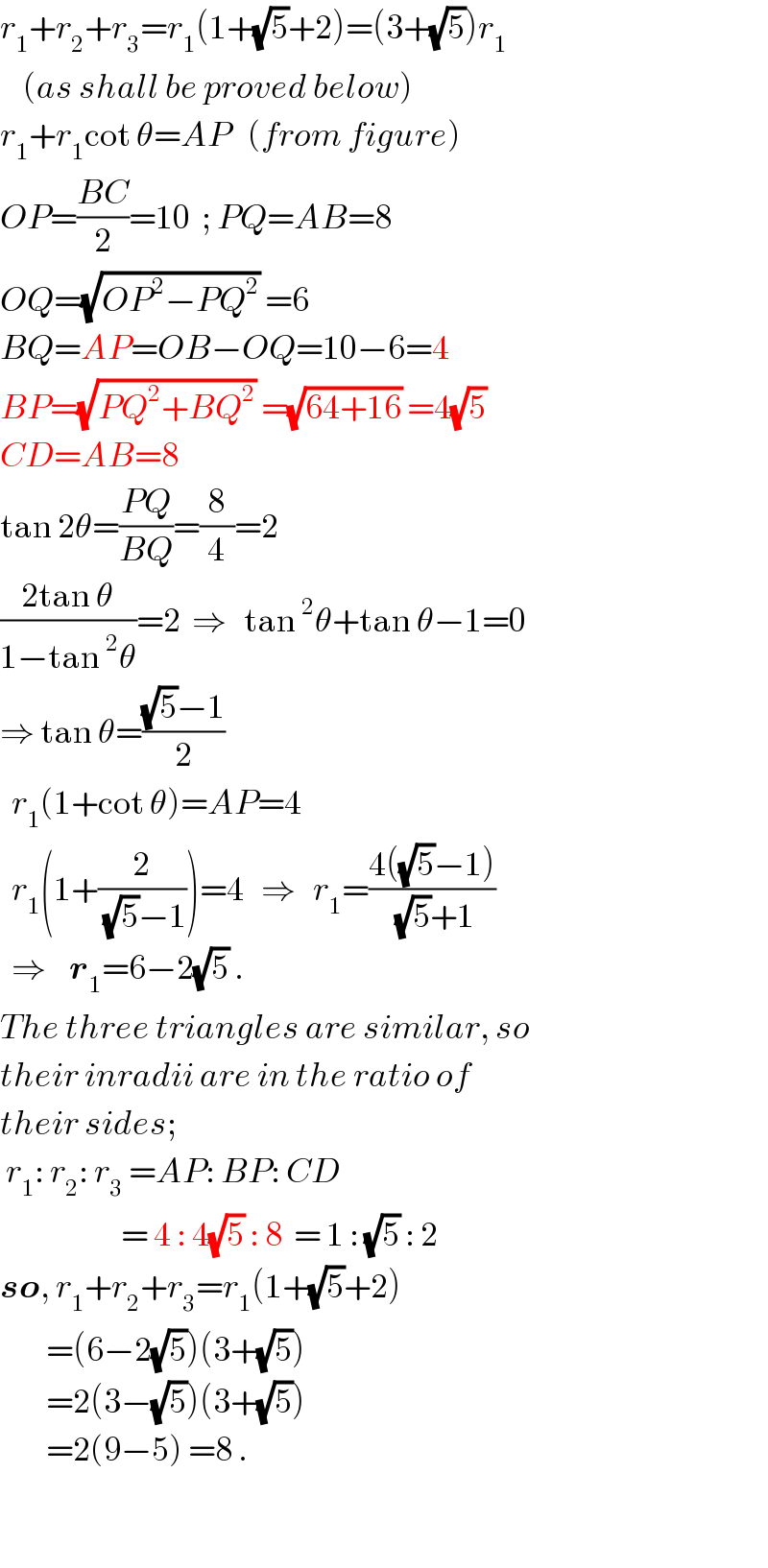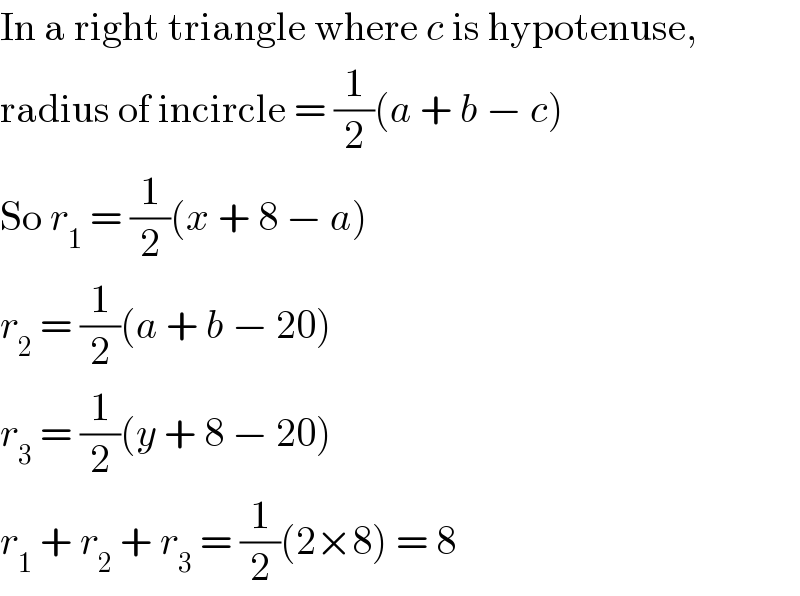
Question and Answers Forum
Question Number 20131 by NECC last updated on 22/Aug/17

Commented by ajfour last updated on 22/Aug/17

Commented by NECC last updated on 22/Aug/17

Commented by ajfour last updated on 22/Aug/17

Commented by NECC last updated on 22/Aug/17

Answered by Tinkutara last updated on 22/Aug/17

Commented by Tinkutara last updated on 22/Aug/17

Commented by ajfour last updated on 22/Aug/17

Commented by NECC last updated on 22/Aug/17

